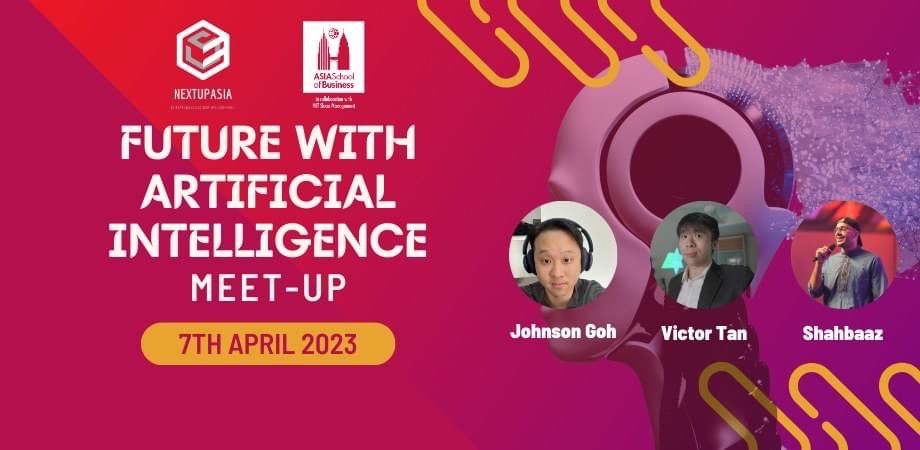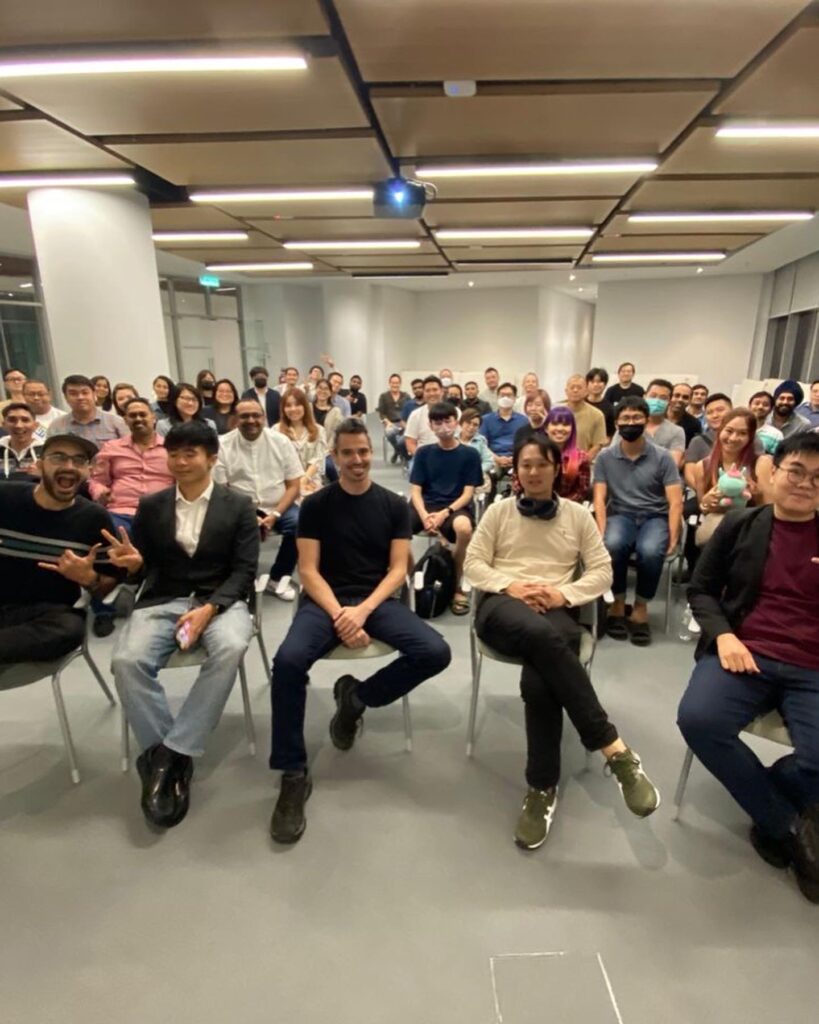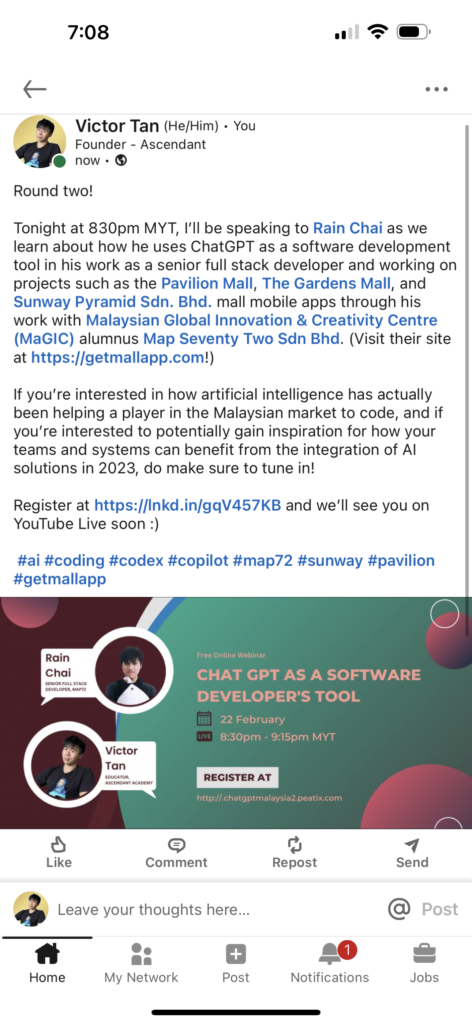In the past couple of weeks, I’ve had the chance to speak at a couple of events concerning generative AI, most recently the Future of AI meetup with NextUpAsia at the Asia School of Business!

As one of the invited speakers for this event, I had the chance to talk a lot about the different uses of AI in enterprise, drawing a distinction between generative AI and AI for process improvement, and also got the chance to highlight my thoughts about artificial intelligence in the context of business and in education, to demonstrate Midjourney for enterprises (and to create a t-shirt design for the Asia School of Business!), and to meet many new and interesting collaborators with whom I think there will be lots of unique opportunities to work together.
Some of these clips show you what happened at the session:
#1: Panel discussion about generative AI technologies.
During this part of the session, my fellow panelists Johnson Goh, Shahbaaz D’Ali, and Jason Sosa had a lively discussion with the audience about the present and future of AI technologies, touching upon the impact of generative AI on different industries, as well as some of the core limitations of generative AI.
Everyone came well-prepared with examples and topics to discuss, and it was mindblowing to watch the average level of discussion on the floor that night! My particular contribution to the session was to discuss the concept of the AI hallucination, which I’ll probably speak a little bit more about in another post later on, during which I observed that rather than replacing humans, it’s likely that generative AI will simply create an increased demand for humans who can exercise higher quality critical thinking and judgment in the future.
#2: Education in AI – A Discussion.
During this part of the session, I had the chance to highlight some of the key challenges and opportunities posed by Artificial Intelligence in education, and to also draw attention to the recent (and admirable!) actions of Singapore’s Minister Chan Chun Sing in highlighting an AI strategy for the Singaporean education system alongside speaking about some of the challenges and opportunities that students will face in the future as a consequence of the development of generative AI technologies.
#3: A Midjourney Enterprise demonstration.
This was rather spontaneous, but I had the chance to conduct a training about the ways that ChatGPT and Midjourney can integrate with one another in order to create something that is greater than the sum of their parts, by facilitating the process of image generation at scale.
Surprisingly, that’s not all as boring as it might initially sound, because we had the chance to create foods from a Ramadhan bazaar and to showcase these as proofs of concept to business owners along the way as well!
Conclusion:
Overall, this talk was an incredible experience that I think has opened up a host of interesting new opportunities and a new frontier for me, as well as an enjoyable evening where I truly felt that I was living the life of the mind as I participated in a conversation that no doubt will continue to dominate the consciousness of people around the world in the days moving forward.
It was a huge privilege to be a part of the AI conversation and to begin talking about the ways in which AI can be used by businesses as part of their journey onward into the 21st century, and I’m thrilled to look at the opportunities ahead in the days to come 🙂
Thank you to NextUpAsia and the Asia School of Business established in collaboration with MIT for having me!

P.S. Work has been busy, but it’s beginning to dovetail more with writing and creating a lot more – I’ll try to write more regularly soon!


